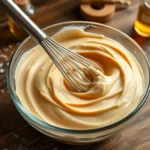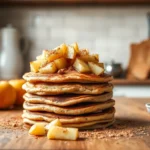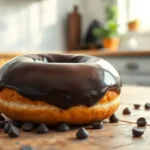We’ve discovered the secret to creating incredibly fluffy and nutritious pancakes that’ll transform your breakfast routine forever. Oat flour pancakes aren’t just a trendy health food swap – they’re genuinely delicious pancakes that happen to be packed with fiber protein and wholesome goodness.
What makes these pancakes so special? Unlike traditional wheat flour pancakes oat flour creates a naturally tender texture with a subtle nutty flavor that pairs perfectly with maple syrup fresh berries or your favorite toppings. Plus they’re naturally gluten-free when you use certified gluten-free oats making them perfect for those with dietary restrictions.
We’ll show you how to make these easy oat flour pancakes using simple pantry ingredients you probably already have on hand. The best part? You can whip up a batch in just 15 minutes and feel good about serving your family a breakfast that’s both indulgent and nutritious.
Ingredients
These simple ingredients come together to create perfectly fluffy oat flour pancakes that deliver on both taste and nutrition. We’ve organized everything you need into clear categories to make preparation effortless.
Dry Ingredients
- 1 cup oat flour (or 1 cup rolled oats ground into flour)
- 2 tablespoons sugar (white or coconut sugar)
- 2 teaspoons baking powder
- 1/2 teaspoon salt
- 1/2 teaspoon ground cinnamon
Wet Ingredients
- 1 cup milk (dairy or non-dairy alternatives like almond or oat milk)
- 1 large egg
- 2 tablespoons melted butter or coconut oil
- 1 teaspoon vanilla extract
Optional Add-ins
- 1/2 cup fresh or frozen blueberries
- 1/4 cup mini chocolate chips
- 2 tablespoons chopped walnuts or pecans
- 1 tablespoon chia seeds or ground flaxseed
- 1/4 teaspoon nutmeg for extra warmth
- 1 tablespoon maple syrup for added sweetness
Equipment Needed
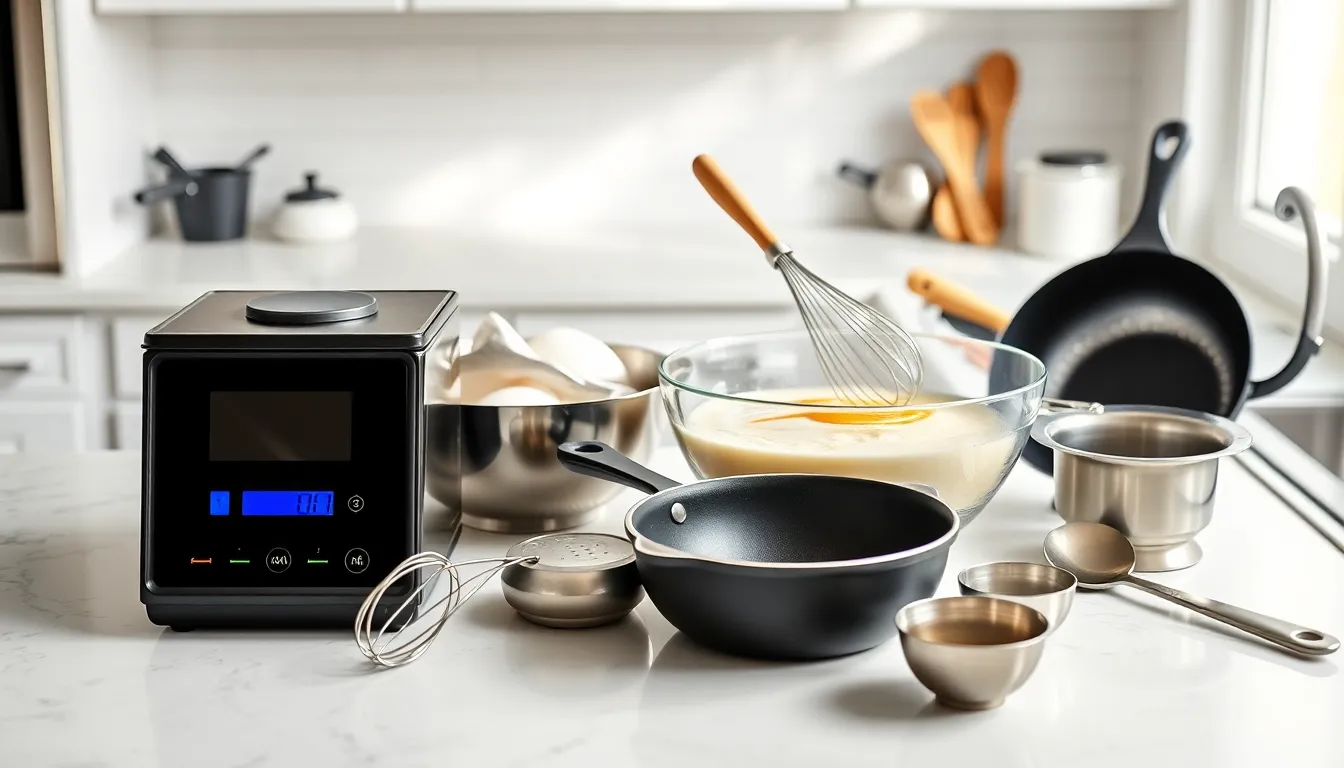
Creating perfect oat flour pancakes requires the right tools to ensure consistent results every time. We recommend gathering these essential items before starting your pancake preparation.
Digital Food Scale serves as our most important tool for measuring oat flour accurately. Precise measurements guarantee the ideal pancake texture and prevent dense or overly thick results.
Large Mixing Bowl provides adequate space for combining all ingredients without spillage. We suggest using a bowl with high sides to accommodate vigorous whisking of wet and dry components.
Non-Stick Pan stands as the cornerstone for successful pancake cooking. This essential cookware prevents sticking and ensures even browning without requiring excessive oil or butter.
Egg Lifter or Wide Spatula enables smooth flipping without breaking delicate pancakes. We prefer tools with thin edges that slide easily under the pancake surface.
Whisk helps create smooth batter by eliminating lumps and incorporating air for fluffier results. A medium-sized whisk works best for combining wet ingredients thoroughly.
Measuring Cups and Spoons ensure accurate proportions of liquid ingredients and smaller dry components like baking powder and salt. Standard measuring tools provide consistency across multiple batches.
Ladle or Large Spoon controls portion sizes for uniform pancakes. We find that consistent batter amounts create evenly sized pancakes that cook at the same rate.
Having these tools ready before cooking streamlines the pancake making process and helps achieve restaurant quality results in your own kitchen.
Instructions
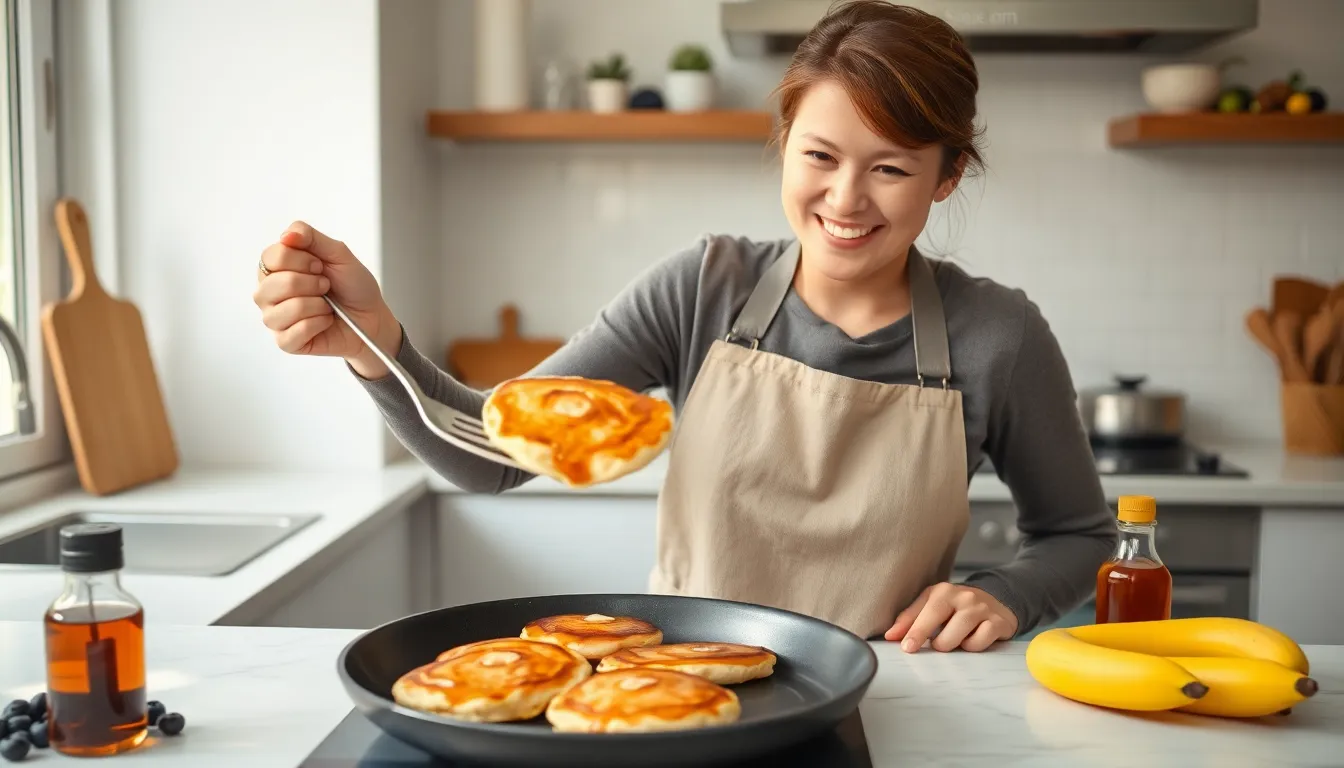
Now that we have our ingredients ready and equipment prepared, let’s jump into creating these delicious oat flour pancakes. The process is straightforward and takes just a few simple steps to achieve perfectly fluffy results.
Prep the Batter
We start by whisking together our dry ingredients in a medium bowl. Combine the oat flour, baking powder, and salt until evenly distributed. In a separate bowl, we whisk together the wet ingredients including milk, eggs, and melted butter. Add the maple syrup and vanilla extract to this mixture for enhanced flavor.
Next, we create a well in the center of our dry ingredients and pour in the wet mixture. Stir gently using a spoon or whisk until the ingredients are just combined. Avoid overmixing as this can result in tough pancakes.
Allow the batter to rest for about 5 minutes. This crucial step lets the oat flour absorb the liquid properly, resulting in more tender pancakes with better texture.
Cook the Pancakes
We heat our non-stick skillet over medium heat and add a small amount of oil to prevent sticking. The pan should be warm but not smoking hot to ensure even cooking.
Using a 1/4 cup measure, we scoop the batter onto the heated skillet. Cook the pancakes for 2-3 minutes until small bubbles begin to appear on the surface. This indicates the bottom is properly set and golden brown.
Carefully flip each pancake using our spatula and cook for another 2-3 minutes on the second side. The pancakes should be golden brown and spring back lightly when touched in the center.
Serving and Finishing Touches
We serve these oat flour pancakes immediately while they’re hot and at their fluffiest. Top with a pat of melted butter and drizzle with maple syrup for classic enjoyment.
Consider adding fresh fruits like blueberries or sliced bananas for extra nutrition and flavor. Chopped nuts or a sprinkle of cinnamon can provide delightful texture and warmth. For those with a sweet tooth, chocolate chips make an excellent addition that both kids and adults will love.
Cooking Tips for Perfect Oat Flour Pancakes
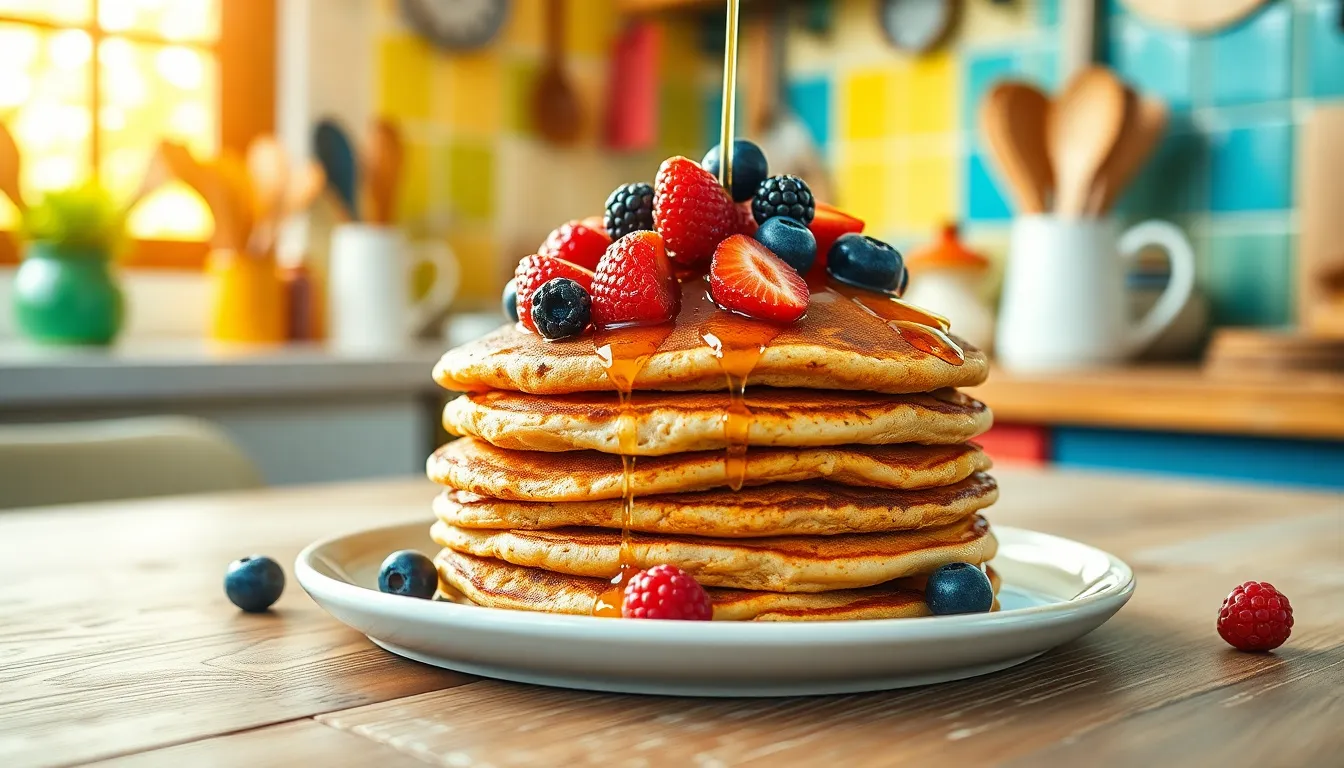
Master Your Oat Flour Selection
We recommend starting with high-quality oat flour for the best results. You can purchase pre-made oat flour or create your own by blending rolled oats or quick oats in a blender until they reach a fine texture. Making oat flour at home gives us complete control over the consistency and ensures maximum freshness for our pancakes.
Temperature Control is Essential
Setting our pan temperature correctly makes the difference between perfect pancakes and disappointing results. We heat our non-stick pan or griddle over medium heat and add a small amount of oil or butter to prevent sticking. Medium heat allows the pancakes to cook evenly without burning the exterior while leaving the interior undercooked.
Perfect Your Batter Technique
Creating smooth batter requires proper mixing technique. We whisk together our dry ingredients including oat flour, baking soda or baking powder, and salt in one bowl. Our wet ingredients like eggs, milk, and yogurt get combined separately before we gently fold them together. This method prevents overmixing which can result in tough pancakes.
Adjust Consistency for Optimal Results
Batter consistency directly affects our pancake texture and appearance. When our batter appears too thin, we add more oat flour gradually until it reaches the desired thickness. If the mixture becomes too thick, we incorporate small amounts of milk until we achieve the perfect pourable consistency.
Use the Cover Technique
Covering our pan during cooking helps retain heat and creates thicker, fluffier pancakes. This technique traps steam and ensures even cooking throughout the pancake while preventing the surface from drying out before the interior sets properly.
Watch for Visual Cues
We pour our batter onto the heated pan and watch for bubbles to appear on the surface. Once bubbles form and the bottom turns golden brown, we flip the pancake and cook until the second side achieves the same golden color. These visual indicators ensure our pancakes cook thoroughly without burning.
Consider Resting Time
Allowing our batter to rest for a few minutes before cooking enhances the final texture. This optional step gives the oat flour time to fully hydrate and creates more tender pancakes with improved structure.
Enhance with Strategic Add-ins
Fresh or frozen fruits, nuts, or chocolate chips can be incorporated for extra flavor and texture. We fold these ingredients gently into our prepared batter just before cooking to distribute them evenly without overmixing the base.
Storage and Make-Ahead Instructions
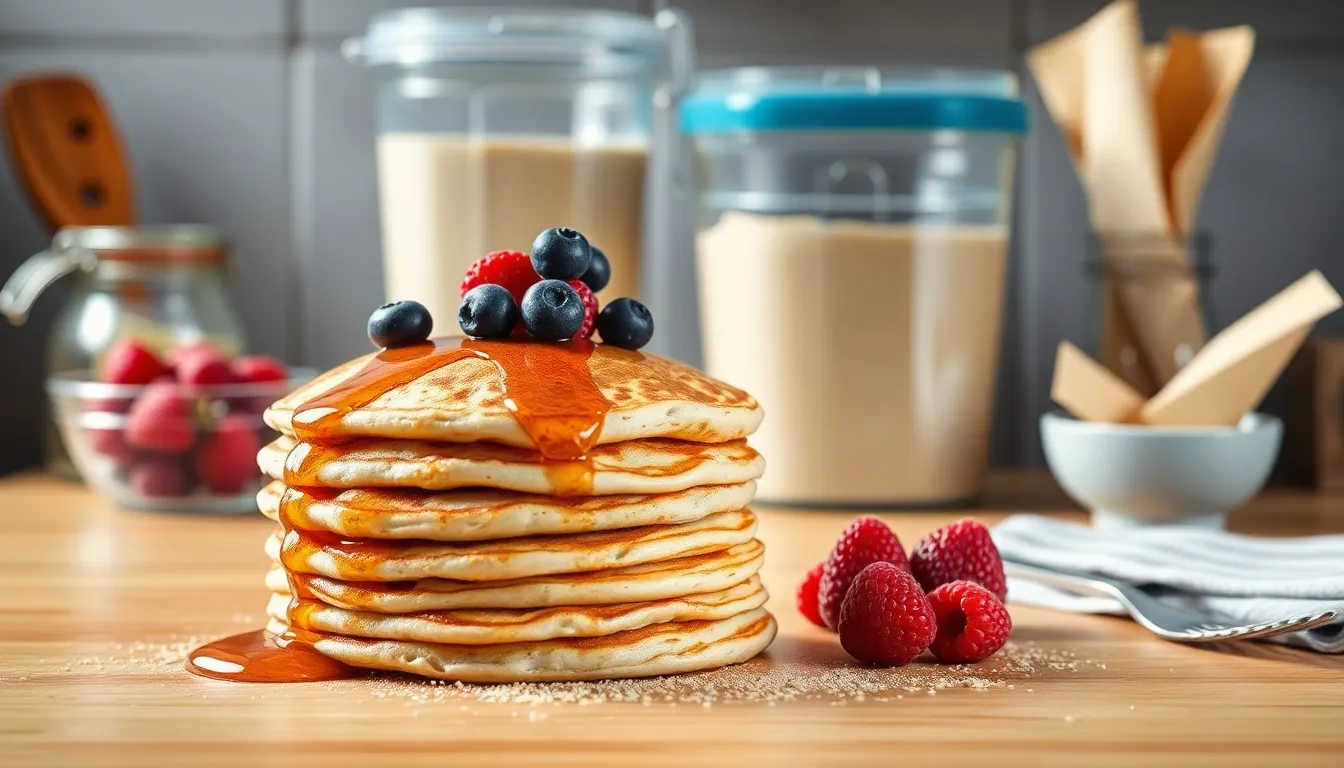
Now that we’ve mastered the perfect oat flour pancake recipe, let’s explore how to store our delicious creations and streamline our morning routine with make-ahead techniques.
Storing Leftover Pancakes
Refrigeration offers the most practical option for storing leftover oat flour pancakes. We recommend cooling pancakes completely before storing to prevent condensation buildup. Place pancakes in an airtight container or resealable plastic bag, separating each pancake with parchment or wax paper to prevent sticking together.
| Storage Method | Duration | Temperature |
|---|---|---|
| Refrigerated (airtight container) | 3-4 days | 35-40°F |
| Refrigerated (tightly sealed) | Up to 1 week | 35-40°F |
| Room temperature | 2 days maximum | 68-72°F |
Countertop storage works for short periods but isn’t our preferred method for oat flour pancakes. We suggest limiting room temperature storage to 2 days maximum in a sealed container.
Freezing Instructions
Preparation starts with allowing pancakes to cool fully before beginning the freezing process. This prevents ice crystals from forming and maintains texture quality.
Flash freezing creates the best results for long-term storage. We arrange pancakes in a single layer on a parchment-lined baking sheet and freeze until solid, typically 1-2 hours.
Long-term storage requires transferring frozen pancakes to a freezer-safe bag or container. We remove as much air as possible and label with date and contents for easy identification.
| Freezing Method | Duration | Temperature |
|---|---|---|
| Flash frozen then bagged | 2-3 months | 0°F or below |
| Direct freezer storage | 1-2 months | 0°F or below |
Preventing stickiness involves separating pancakes with parchment or wax paper before freezing. This technique allows us to remove individual pancakes without defrosting the entire batch.
Make-Ahead Batter Tips
Overnight batter storage transforms busy mornings into stress-free experiences. We prepare oat flour pancake batter the night before and store it in an airtight container in the refrigerator for up to 1 day.
Consistency checks become necessary since batter may thicken overnight in the refrigerator. We thin the mixture with a splash of milk or water if needed before cooking.
Reheating methods vary based on storage choice:
| Reheating Method | Refrigerated Time | Frozen Time | Temperature |
|---|---|---|---|
| Microwave | 30-60 seconds | 60-90 seconds (flip halfway) | High power |
| Oven | 5-8 minutes | 10-12 minutes (covered with foil) | 350°F |
| Toaster | 2-3 cycles | 3-4 cycles | Low setting |
Advantages of make-ahead preparation include quicker morning routines and improved texture as oats hydrate overnight. We find that allowing batter to rest creates more tender pancakes with better flavor development.
Variations and Flavor Ideas
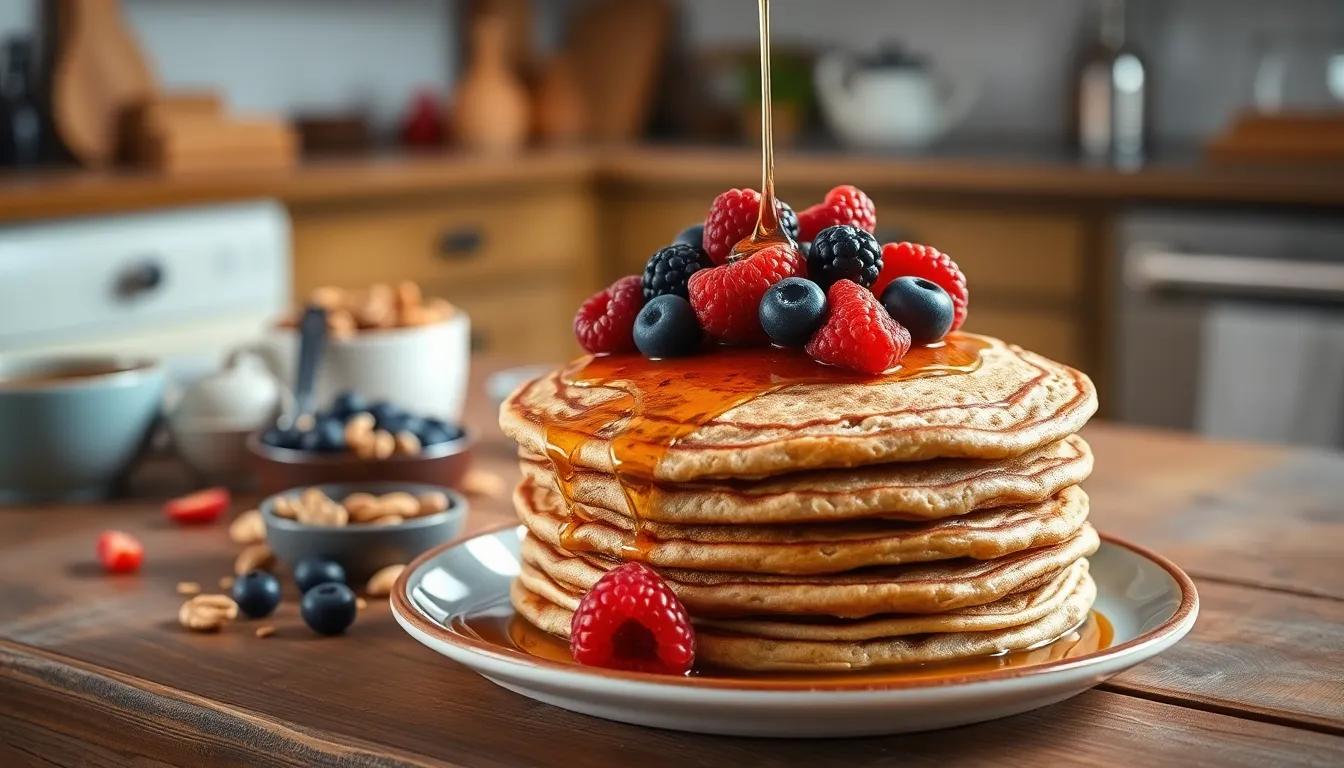
Now that we’ve mastered the basic oat flour pancake recipe, let’s explore exciting ways to customize these nutritious treats. These variations allow us to create different flavors while maintaining the wholesome benefits of oat flour.
Sweet Variations
We can transform our basic oat flour pancakes into indulgent breakfast treats with these sweet additions. Maple syrup serves as both a natural sweetener in the batter and a classic topping that enhances the nutty oat flavor. For those seeking alternatives, honey or agave nectar provide excellent substitutes that offer unique flavor profiles while maintaining the desired sweetness level.
Dark chocolate chips create an irresistible addition that melts slightly during cooking, creating pockets of rich chocolate throughout each pancake. We recommend using high-quality dark chocolate chips for the best flavor balance. Cinnamon adds warmth and complexity to the batter, while lemon zest provides a bright citrus twist that pairs beautifully with fresh berries.
For chocolate lovers, incorporating cocoa powder directly into the dry ingredients creates rich chocolate pancakes that satisfy morning cravings. Coconut flakes offer a tropical flavor that works especially well when paired with banana slices or pineapple chunks.
Healthy Add-ins
We can boost the nutritional value of our oat flour pancakes with these wholesome additions. Fresh fruits like sliced bananas, strawberries, blueberries, and raspberries provide natural sweetness, vitamins, and antioxidants while adding beautiful color to our breakfast plates.
Nuts and seeds such as chopped almonds, walnuts, or pumpkin seeds contribute healthy fats, protein, and satisfying crunch. These additions help create more filling pancakes that sustain energy levels throughout the morning. Greek yogurt serves as both a protein-rich ingredient in the batter and a creamy topping that enhances texture.
Nut butters including peanut butter, almond butter, or cashew butter can be drizzled on top or swirled into the batter before cooking. These additions provide healthy fats and protein while creating rich, satisfying flavors. Chia seeds offer omega-3 fatty acids and fiber, while flaxseed meal adds similar nutritional benefits with a subtle nutty taste.
For dairy-free options, we can substitute regular milk with oat milk or almond milk, and replace eggs with flaxseed or chia seed “eggs” to create completely plant-based pancakes without sacrificing flavor or texture.
Serving Suggestions

Our fluffy oat flour pancakes become even more delicious when paired with the right toppings and accompaniments. We recommend starting with classic combinations that enhance the natural nutty flavor of oat flour.
Maple syrup and butter create the perfect traditional pairing that adds rich sweetness and creamy texture to every bite. The warm butter melts into the pancake’s surface while maple syrup provides that beloved breakfast sweetness we all crave.
Honey offers a delightful alternative to maple syrup with its floral notes and natural sweetness. We love how honey complements the earthy oat flour flavor while adding a touch of sophistication to your morning meal.
Fresh fruit transforms our oat flour pancakes into a vibrant and nutritious feast. Blueberries and raspberries provide bursts of tartness that balance the pancakes’ mild sweetness. Sliced bananas add natural creaminess and extra fiber to boost the meal’s nutritional value.
Nut butter creates a protein-packed topping that keeps you satisfied longer. We suggest spreading peanut or almond butter across warm pancakes for added richness and sustained energy throughout your morning.
Whipped cream adds an indulgent touch that makes our oat flour pancakes feel like a special weekend treat. The light and airy texture contrasts beautifully with the pancakes’ hearty consistency.
Berries and jam offer a sweet and fruity combination that brings bright flavors to your plate. We recommend using seasonal jams to highlight the best fruits available in your area.
For those following dairy-free diets, yogurt alternatives like almond milk or cashew yogurt provide creamy textures without compromising dietary needs. Vegan cream cheese and vegan whipped cream create luxurious dairy-free treats that satisfy any craving while maintaining the wholesome nature of our oat flour pancakes.
Nutritional Benefits of Oat Flour Pancakes
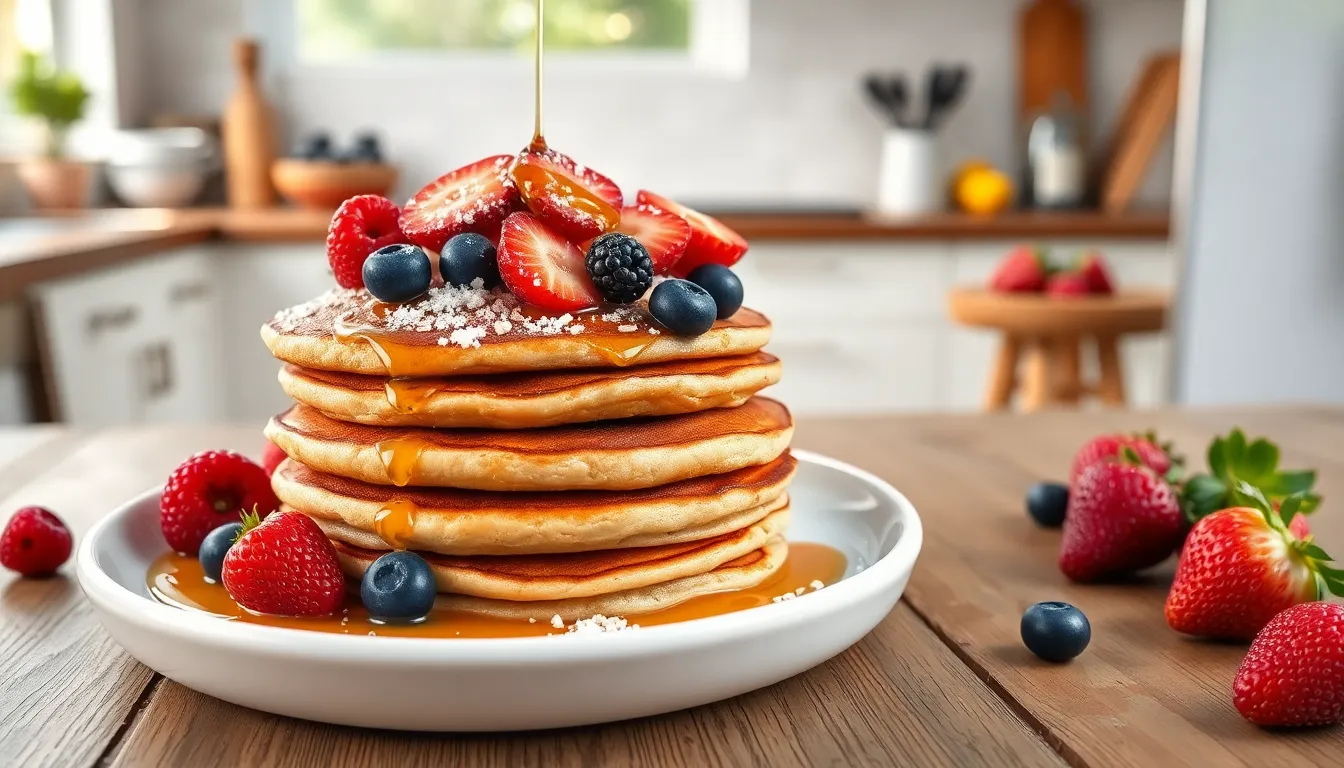
Our oat flour pancakes deliver exceptional nutritional value that transforms your morning meal into a powerhouse breakfast. These pancakes provide sustained energy and essential nutrients that support your overall health throughout the day.
Fiber Rich Foundation
Oat flour stands out as an excellent source of both soluble and insoluble fiber. This dual fiber content helps maintain stable blood sugar levels while promoting healthy digestion and supporting effective weight management. We appreciate how this fiber content keeps us feeling satisfied longer than traditional wheat flour alternatives.
Protein Packed Performance
Each cup of oat flour contains approximately 16 grams of protein, making our pancakes particularly beneficial for muscle repair and growth. Vegetarians and vegans find this protein content especially valuable for meeting their daily nutritional requirements. Our pancakes deliver about 14 grams of protein per cup serving, contributing significantly to your morning protein intake.
Antioxidant Advantages
Oats naturally contain powerful antioxidants including avenanthramides and polyphenols. These compounds provide anti-inflammatory properties that help reduce blood pressure and protect against cellular damage. We value these natural protective elements that support long term health benefits.
Essential Micronutrients
Our oat flour pancakes supply vital vitamins and minerals including manganese, phosphorus, magnesium, iron, zinc, and B vitamins. These micronutrients support various bodily functions from bone health to energy metabolism. Each serving contributes meaningfully to your daily nutritional requirements.
Heart Healthy Fats
Oat flour contains beneficial unsaturated fats, including omega 3 fatty acids that support cardiovascular health. These healthy fats help reduce inflammation throughout the body while providing essential fatty acids your system needs.
Complete Nutritional Profile
| Nutrient | Per Cup of Pancakes |
|---|---|
| Calories | 476 |
| Protein | 14 grams |
| Fat | 12 grams |
| Carbohydrates | 71 grams |
| Fiber | 9.5 grams |
Our oat flour pancakes create a nutritionally balanced breakfast that provides sustained energy without the blood sugar spikes common with refined flour alternatives. This complete nutritional profile makes them an excellent choice for active individuals, growing children, and anyone seeking a wholesome breakfast option that supports their health goals.
Troubleshooting Common Issues
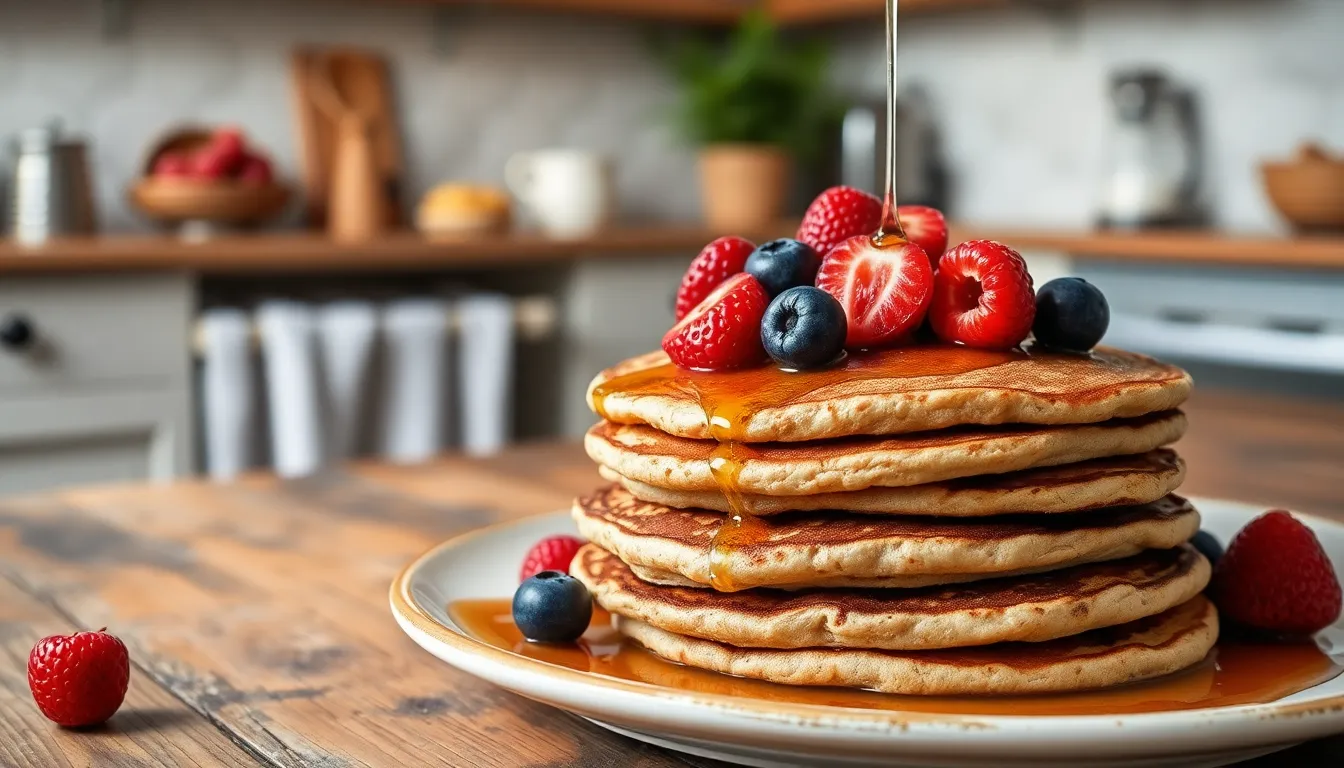
Even with careful preparation, oat flour pancakes can sometimes present challenges that affect their texture and appearance. We’ve identified the most common problems and their answers to help you achieve perfect results every time.
Pancakes Falling Apart
When your pancakes crumble or break during flipping, the issue typically stems from insufficient binding or excessive liquid in the batter. We recommend reducing the liquid content by 2-3 tablespoons and adding an extra quarter cup of oat flour to create a thicker consistency. Properly greasing your pan before cooking prevents sticking and makes flipping easier. Using a wide spatula also provides better support when turning delicate oat flour pancakes.
Flat and Dense Pancakes
Flat pancakes often result from expired baking powder or overly thin batter. We always check our baking powder’s freshness by testing it in warm water before use. Fresh baking powder should bubble vigorously when mixed with liquid. Also, we ensure our batter maintains a thick but pourable consistency rather than being too runny. Avoid preparing the batter too far in advance as this can cause the leavening agents to lose their effectiveness.
Rubbery or Gummy Texture
Overmixing creates tough, chewy pancakes by developing too much gluten structure. We mix our wet and dry ingredients until just combined, leaving some small lumps in the batter. These lumps will disappear during cooking and result in tender, fluffy pancakes. Stop mixing as soon as no dry flour remains visible.
Pancakes Not Holding Their Shape
Shape retention problems often occur when using low-quality oat flour or undercooking the pancakes. We use finely ground, high-quality oat flour for the best structure. Cook each pancake until bubbles form across the surface and the edges appear set before attempting to flip. This ensures the pancake has developed enough structure to maintain its shape.
| Issue | Primary Cause | Solution |
|---|---|---|
| Falling apart | Too much liquid | Reduce liquid by 2-3 tbsp, add ¼ cup flour |
| Flat texture | Expired baking powder | Test and replace baking powder |
| Rubbery consistency | Overmixing | Mix until just combined |
| Poor shape retention | Undercooking | Cook until bubbles form and edges set |
Additional Prevention Tips
We always use a non-stick pan or well-seasoned griddle with light greasing to prevent sticking issues. Medium heat ensures even cooking without burning the exterior before the interior sets. Serving your pancakes immediately while warm maintains their best texture and prevents them from becoming soggy or tough as they cool.
Conclusion
These oat flour pancakes prove that healthy breakfast doesn’t mean sacrificing flavor or satisfaction. We’ve shown you how simple it is to create fluffy nutrient-packed pancakes that’ll become your new weekend favorite.
The beauty of this recipe lies in its versatility and simplicity. Whether you’re meal prepping for busy mornings or experimenting with creative flavor combinations the possibilities are endless.
We’re confident that once you try these pancakes you’ll never look back. The combination of wholesome ingredients quick preparation time and incredible taste makes them a winner for families everywhere.
So grab your oat flour and get cooking – your taste buds and your body will thank you for choosing this nutritious breakfast option that doesn’t compromise on deliciousness.
Frequently Asked Questions
What makes oat flour pancakes healthier than regular pancakes?
Oat flour pancakes are packed with fiber and protein, making them more nutritious than traditional wheat flour pancakes. They help stabilize blood sugar levels, aid digestion, and provide essential nutrients like manganese, phosphorus, and B vitamins. The fiber content keeps you fuller longer, while the protein supports muscle repair and development.
Can I make oat flour pancakes gluten-free?
Yes, oat flour pancakes can be made gluten-free by using certified gluten-free oats. Regular oats may be cross-contaminated with wheat during processing, so look for oats specifically labeled as gluten-free. This makes them perfect for people with celiac disease or gluten sensitivity.
How long does it take to make oat flour pancakes?
Oat flour pancakes can be prepared in just 15 minutes from start to finish. This includes mixing the batter, letting it rest for 5 minutes, and cooking the pancakes. The quick preparation time makes them ideal for busy mornings when you want a wholesome breakfast.
What equipment do I need to make perfect oat flour pancakes?
Essential equipment includes a digital food scale for accurate measurements, a large mixing bowl, a non-stick pan, and a whisk. You’ll also need measuring cups and spoons, an egg lifter or wide spatula for flipping, and a ladle for portion control. These tools help achieve restaurant-quality results at home.
Can I make the batter ahead of time?
Yes, you can prepare oat flour pancake batter the night before and store it in the refrigerator. This actually improves the texture as the oat flour has more time to hydrate. Just give it a gentle stir before cooking, and you’ll have fresh pancakes ready in minutes.
How should I store leftover oat flour pancakes?
Store leftover pancakes in an airtight container in the refrigerator for up to 3 days. For longer storage, freeze them for up to 3 months using the flash-freezing method. Place them on a baking sheet first, then transfer to freezer bags once solid to prevent sticking.
What are the best toppings for oat flour pancakes?
Classic toppings include butter and maple syrup, but you can also try honey, fresh fruits, nut butters, or whipped cream. For added nutrition, consider Greek yogurt, nuts, seeds, or chocolate chips. The nutty flavor of oat flour pairs well with both sweet and savory toppings.
Why are my oat flour pancakes falling apart?
Pancakes may fall apart due to too much liquid in the batter or insufficient binding ingredients. Make sure to measure ingredients accurately and avoid overmixing. Let the batter rest for 5 minutes before cooking, and ensure your pan is properly heated and greased.
Can I make dairy-free oat flour pancakes?
Absolutely! Replace regular milk with oat milk, almond milk, or any plant-based milk. Substitute the egg with a flax egg (1 tablespoon ground flaxseed mixed with 3 tablespoons water) and use coconut oil instead of butter. These substitutions maintain the pancakes’ texture and flavor.
What’s the secret to fluffy oat flour pancakes?
The key to fluffy pancakes is avoiding overmixing the batter, using fresh baking powder, and letting the batter rest for 5 minutes. Cook on medium heat and look for bubbles forming on the surface before flipping. Don’t press down on the pancakes while cooking to maintain their fluffiness.


